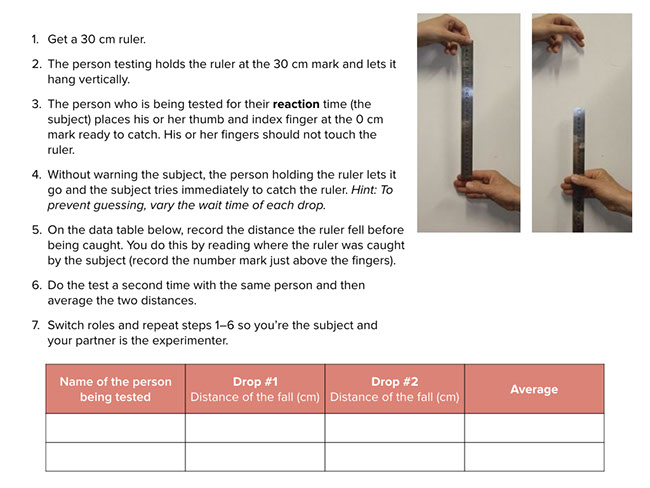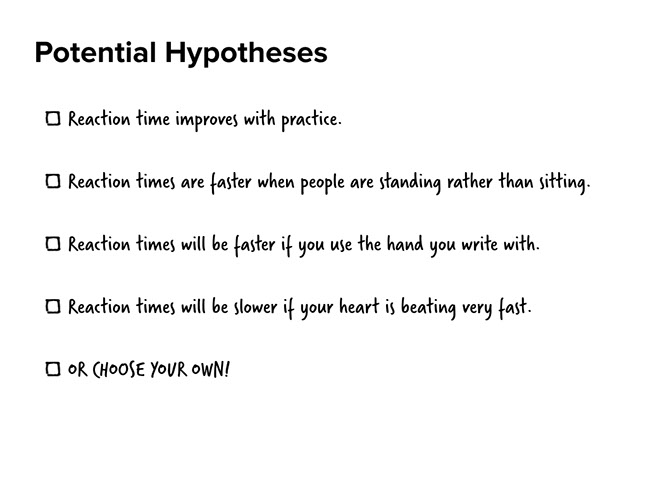SciGen Teacher Dashboard
Unit T5
Exploring a Hypothesis
Lab: Reaction Ruler
Duration: Approximately 80 minutes
Students will follow a detailed procedure and record data. Students will then develop a hypothesis, write a procedure to test the hypothesis, and carry out the procedure. Students will make a claim based on evidence.
LEARNING OBJECTIVE
Students follow a detailed procedure and record data in a data table.
Teacher Tips
- Do labs yourself prior to teaching them.
Materials
- 30 cm ruler for each team
Teaching Notes
ACTIVITY OVERVIEW
- Practicing a procedure to test reaction times (15 minutes)
- Developing a ruler-drop procedure to test a hypothesis (25 minutes)
- Using your procedure to test a hypothesis - data table (25 minutes)
- Making a claim based on evidence (15 minutes)
Practicing a procedure to test reaction times (15 minutes)
Developing a ruler-drop procedure to test a hypothesis (25 minutes)
Students select or create their own hypotheses on reaction time. There are blank lines for students to write an additional hypothesis about reaction time. Brainstorm additional ideas with the class; however, be sure to approve any student-generated scientific hypotheses.
Students should work with a partner or in a small group to select a hypothesis that they think is true or to create their own.
Partners create a procedure for testing their hypothesis. A sample procedure is included. Ask students if they see anything wrong with the procedure. Point out that by doing Version 1 first each time, the variable of practice is introduced.
Review the necessary elements for creating a hypothesis using the four examples from the list. Do each of these express a view about reaction time and can the reason or cause be tested with a measurement? In each case, the answer is yes.
Remind students of what is necessary for a fair test as they write their procedure. Since they added a variable (in the sample procedure, the added variable was hearing the word “go”), they have to be sure to design a procedure that controls for the new variable.
Using your procedure to test a hypothesis - data table (25 minutes)
Students use their experience with data tables to record the information from their experiments.
Students record and analyze their data.
After students record and analyze their data, they are now able to make a claim about reaction time. Using the sentence frame at the bottom of the data chart, students should write their claims. (See 6.3 for a review on claims-evidence statements.)
Example of a claims-evidence statement from our sample procedure:
“I claim that reaction times are faster when a person hears the word ‘go’ before a ruler dropped rather than by just seeing a ruler drop. My claim is supported by evidence that shows the distance the ruler travels is an average of 1.5 cm less when the word ‘go’ is said as opposed to when it is not said.”

Making a claim based on evidence (15 minutes)
BETA Version - Please send comments and corrections to info@serpinstitute.org



